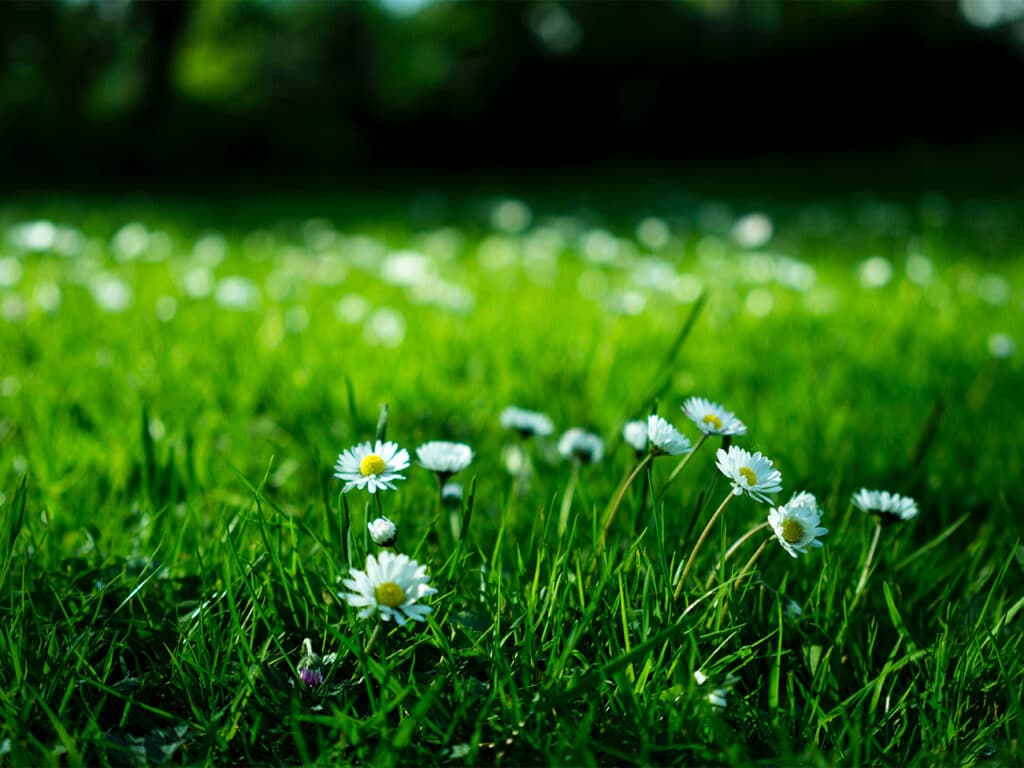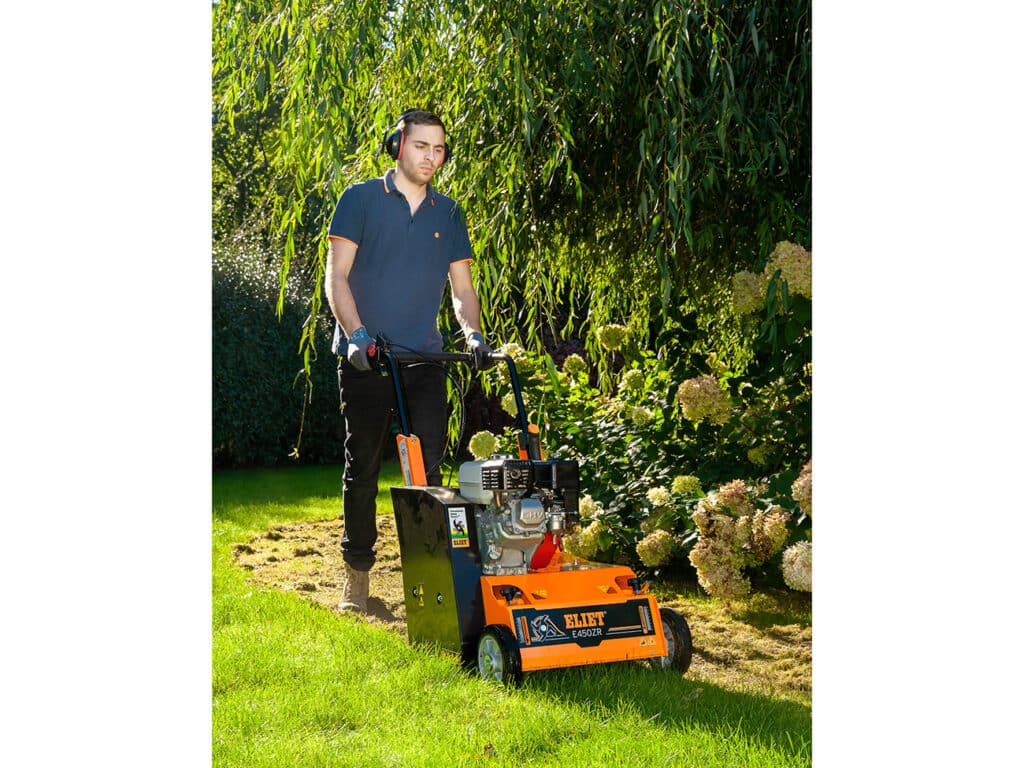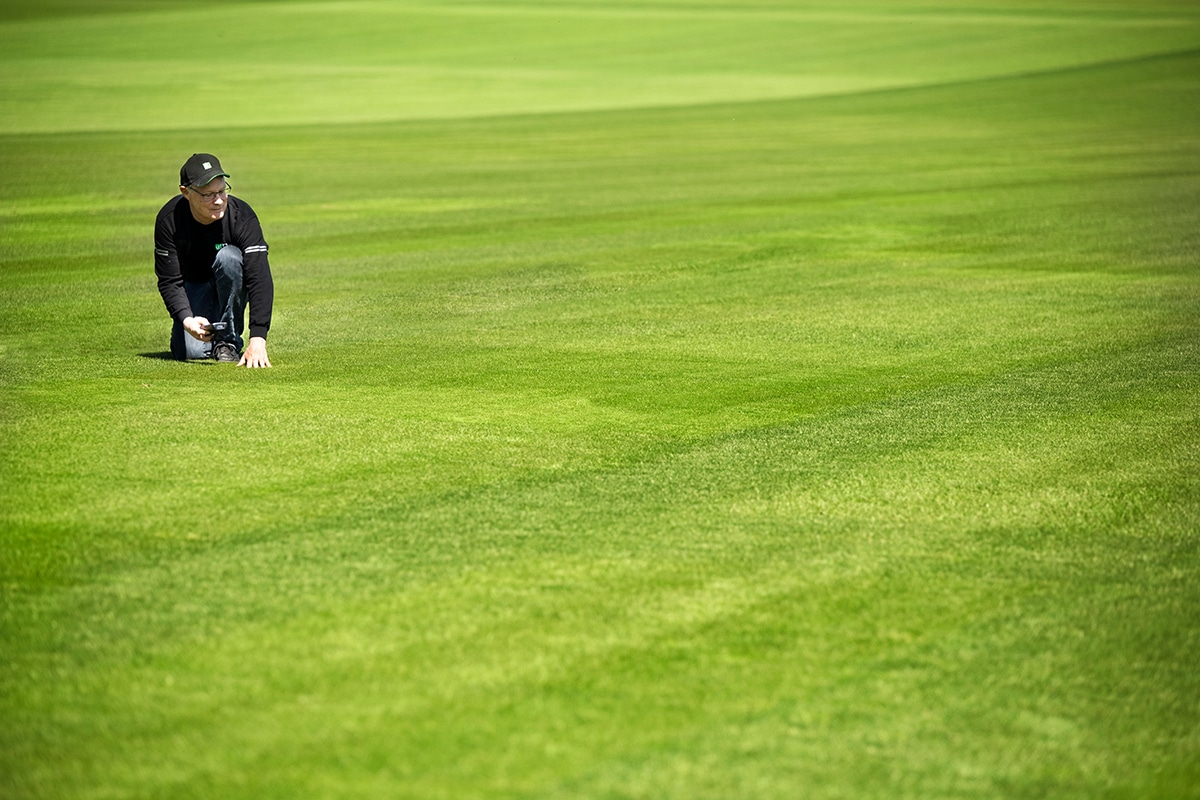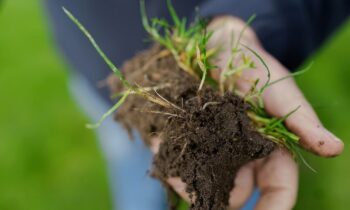
'Mow May Not,' but then what in June?
May, the month when every bird lays a proverbial egg and when every grass is allowed to grow and bloom unrestrained. When the lawn mowers are silent for a month, all manner of plants and herbs have a chance to bloom, encouraging a diversity of wildlife in our gardens. Still, there comes a point when you have to turn that meadow back into a lawn. And this is how you do it.
Next month is the day: Don't Mow May! A beautiful initiative, where for an entire month the lawnmower is left behind. The lawn is given free rein and can blossom into a real carpet of flowers. You deliver a veritable buffet to the many insects and enrich the biodiversity of the garden. A very nice story that will warm you up as a garden and nature lover. Of course, as a garden contractor, you also have the realistic understanding that this free-for-all is best done in a controlled manner, so that months of care for a beautiful ornamental lawn are not lost.
Dosing and scarifying
Once in the month of June most of the flowers have disappeared, it is best to bring the mower back into action. Cutting the grass back to length will be done over several cuts, with only one-third of the length cut away each time. In this way, the amount of chlorophyll is dosed out, allowing the grass to adapt better and come under less stress. When mowing, always use a grass machine with a collection tray. That way weed seeds are sucked up and are less likely to spread into your green carpet.
During the many weeks during which the grass was able to develop long grass stalks, a lot of shade also developed on the lawn floor, causing leaves to die off in this shade zone and causing thatch build-up in the lawn. Herbs and other plants that have since proliferated greatly also need to be cut back. After a cure of biodiversity in the lawn, it is out of the question to use chemical pesticides for this purpose. The ecological cleaning up of the turf can only be done mechanically: scarification is the message.

Minimal damage
During scarification, the blades cut vertically through the grass carpet. In the process, they scrape away an abundance of thatch from the soil. Weeds and other plants in the lawn are often more broad-leaved than grass, so the blades of the scarifier primarily cut away these leafy greens. Stripped of their leaves, weeds are weakened and less able to defend their position among the grass plants that are not affected by scarification. Here it is important to use a scarifier that can comb through the turf very intensively, causing minimal damage to the grass.
The new ELIET EZR scarifiers are particularly suitable for this purpose. The Double Cut blades of these machines are only 1.5 centimeters apart, allowing them to cut the turf very intensively, with only minimal damage thanks to their ultra-thin width (1.5 mm). In addition, the blades also rotate overtop and are also permanently pointed, allowing them to have a better grip on the moss and thatch, thus lifting it out of the turf in the best possible way. As a result, these machines are known for their quality scarification: the moss and thatch are lifted out of the turf with 30% higher efficiency.
The EZR scarifiers are self-propelled, eliminating the need to push and allowing you to clean the turf at an even speed regardless of the terrain. These professional machines are available in different working widths (45 cm, 55 cm and 65 cm), so you can find an ideal machine according to the size of the garden. After scarifying, the lawn is clean again and ready to go into the summer.
Overseeding
After you have removed weeds and moss, bare spots in the lawn may become visible. Therefore, this is the perfect time to overseed the lawn. By doing so, you are introducing young grass into the existing lawn and making the lawn more resilient to summer drought and lawn diseases. The extra grass will increase plant density, which can also suppress weed growth. With the right approach, you will have a clean and green ornamental lawn again in just a few weeks.




